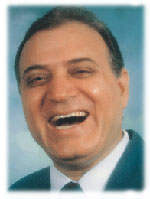
"He then found that if he spent time engaged in imitating the components that make up a smile, his mood lifted. 'That was like an epiphany,' he recalls." This is from the article by Siri Schubert in the current SA Mind. It discusses the work of Paul Ekman.
Laughter Clubs seem to have understood this a few years ago. Dr. Madan Kataria (laughing man on right) started the first laughing club on March 13, 1995. He now is the godfather of laughter yoga.
Jackass as therapy may take a while to gain currency.
Gelastic seizures are left out of Bradley and Daroff but they are no less real. Maybe I wasn't looking in the right place in the index. I had the opportunity to see gelastic seizure earlier this year and they are striking to say the least. The young woman appeared possessed. The laughter was quiet but maniacal. The cause of her seizures was HSV encephalitis years earlier.
"It has been suggested that normal laughter is the result of an interaction of several different brain structures: the frontal and temporal neocortex; the temporo-basal cortex; the visual, olfactorial, and auditorial associative areas; the limbic system with the cingulate gyrus; and the brainstem. The motor manifestations of laughter and the feeling of amusement or mirth have been claimed to be separable functions and, consequently, neurologically dissociated (Lopes da Silva et al 1990; Arroyo et al 1993). Gelastic seizures have been observed to be associated with many different conditions: mainly hypothalamic hamartomas, but also as a seizure manifestation in connection with temporal and frontal lobe lesions as well as other focalities." linkLaughter and mirth may be "neurologically dissociated", but one can not emulate laughter without feeling happy.




No comments:
Post a Comment